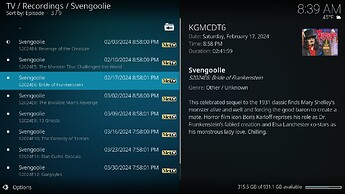Hi all,
I was recently given a Raspberry Pi 4 with OSMC and Kodi on it by a generous friend. Basically I want to set it up to a) watch tv and video off my external SSD drive, b) watch free-to-air TV and c) if possible, watch streaming services like Disney Plus etc…
If it is relevant info - I live in AUSTRALIA… G’day.
I have been reading lots of posts and trying to get my head around how all of this stuff works. I must admit, it is not my area of strength, but I am excited to learn a new skill (and abbreviations). I have figured out a few bits and pieces by reading posts, but here are a few questions I have that I am unsure of. I’m hoping that some of you can help explain some of this in “newby” terms.
QUESTION ONE
I want to set my Pi up to watch free-to-air. I have mostly been reading this thread: LINK From what I understand, I need a USB dongle. Does the one sold in the OSMC store work in Australia? Do I need to connect it to my aerial socket in the wall with a cable? Or… is there a different dongle that people here recommend for use in Australia that has its own aerial built in (my home antenna has pretty average reception since I installed solar panels a few years ago).
I also have an old Playstation PlayTV box. Could I use it? (although I am happy to get something a bit more modern if these are considered “old tech”).
QUESTION TWO
Some users here have posted that they needed a separate powered USB hub for their TV tuner. Is this still the case for the the OSMC dongle, or the PlayTV box? Most of the posts that had this info were a few years old now…
QUESTION THREE
A few of the buttons on my Panasonic TV remote seem to work, but I do like the look of the really simple/minimalist OSMC remote. I don’t like a remote with heaps of buttons that I rarely use. Do people here think that the OSMC remote is worth it (I would have to buy it and get it shipped to Australia)?
QUESTION FOUR
Can I watch Disney Plus using Kodi/OSMC on my Raspberry Pi 4? There seemed to be mixed discussion on this forum, and most posts were 4+ years old, so I wasn’t sure what the latest was…
I am sorry for the long post and questions. I am just trying to get my head around all of this.
Thanks so much in advance!!!
